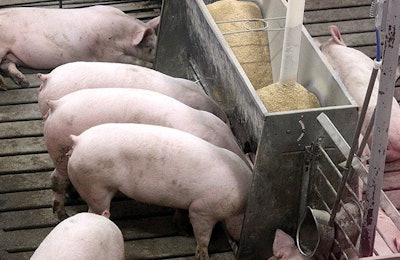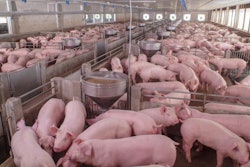
Conventional standards may underestimate the caloric value of soybeans in swine diets, researchers say
Though typically included for their protein profile, soybeans may actually play a key role in providing energy in swine diets.
A new study from Kansas State University, funded by the United Soybean Board, suggests conventional standards may underestimate how many calories soybeans contribute to swine diets. The findings, which were presented in late November, indicate soybean meal may actually contain more energy than corn, potentially containing 120% more energy than the popular grain.
“In diets for pigs … we think of the soybean meal as the amino acid source, and in the past people have given it a very low energy value, and have discounted soy as an energy source,” said Bob Goodband, a swine nutritionist with Kansas State Research and Extension.
Prior studies, conducted over the past five to eight years, had previously hinted at this possibility, Goodband said, leading him and graduate student Henrique Cemin to run an experiment to determine if, in fact, soybeans contain more calories than conventional calculations suggest. Standard practice is to estimate the caloric value of a feed ingredient based on the ingredient’s chemical makeup — how much protein and fiber it contains, for example.
But Goodband’s team tried a newer method, in which swine diets were formulated with gradually increasing percentages of soybean meal. As the amount of meal increased, the pigs ate an increasingly smaller amount of feed without seeing a decrease in growth, suggesting the caloric value of the feed had also increased.
“It should take the same amount of calories to put on a pound of gain,” Goodband said, “and when pigs fed increasing soybean meal had better caloric efficiency, we knew the book values we used underestimated soybean meal’s energy value.”
But it’s also possible that soybean meal plays a yet-undiscovered role in swine nutrition that led to the weight gains.
“This brings out a whole bunch of other questions we’ve been looking at with soybean meal in swine diets, that has to do with its energy content,” Goodband said. Beginning in January, he said, his team is set to run another experiment intended to determine whether swine may have some specific nutritional need that enhances the efficiency with which they process calories and proteins from soy.
“For a long time, we’ve thought amino acids are amino acids, whether they come from soy or DDGS,” Goodband said. “We’ve always said the pig doesn’t care where the amino acid comes from, and same thing with calories.”
Completing this work, he said, would enable producers to formulate swine diets with greater precision, based on the actual needs of the animal.











